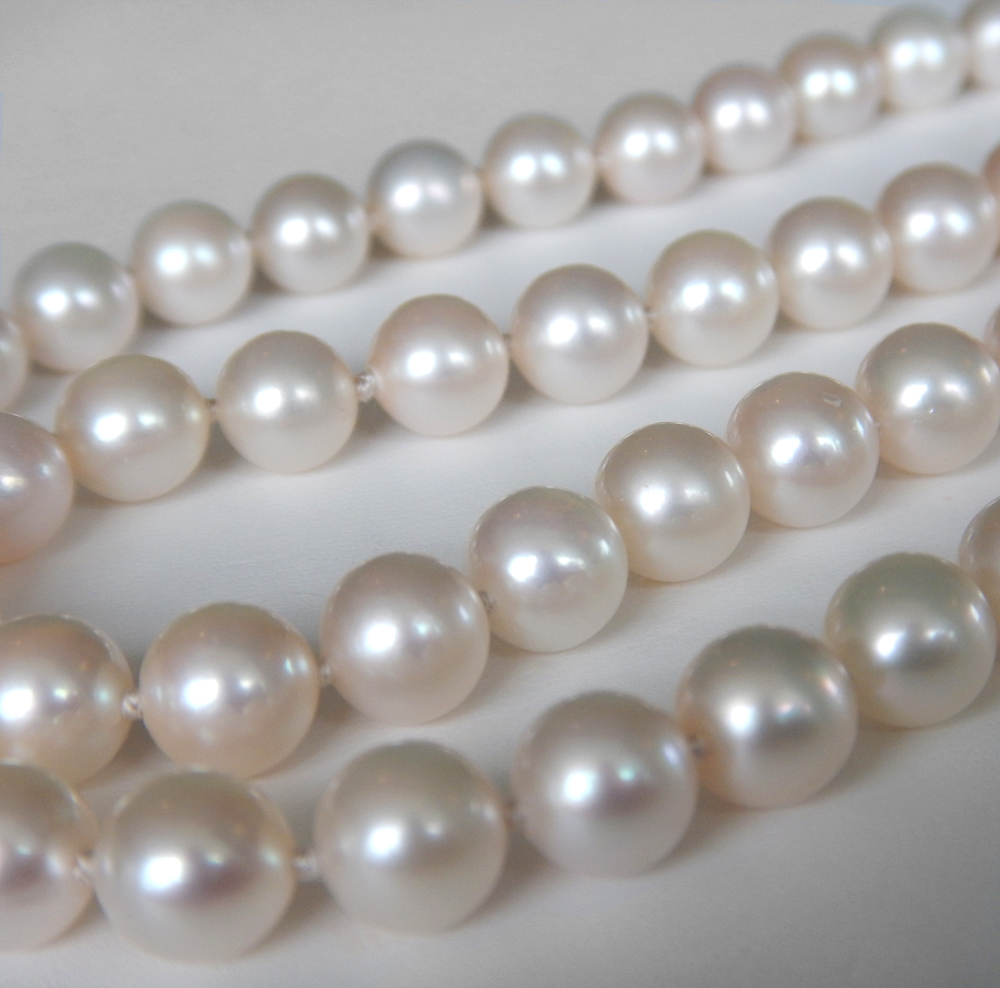White, round and lustrous, akoya pearls are typically the pearls that come to mind when thinking about classic pearl jewelry. Revered for more than 100 years, akoya pearls have had quite the history. Here are some interesting facts about this gorgeous animal-made gem.
- Cultured akoya pearls are created by inserting a small nucleus and small piece of donor mantle into the reproductive organ of a special type of mollusk called Pinctada fucata martensii. When the shell is returned to the water, it secretes layers of nacre around the nucleus and eventually forms the pearls we know and love today.
- The first time whole cultured pearls were ever harvested occurred in 1904 Japan when Tatsuhei Mise successfully harvested a few small akoya pearls using nuclei made of silver and lead. To this day, Japan remains to be the industry leader for akoya pearl production.
- Today, nearly all of the shell nuclei used to culture akoya pearls in Japan comes from freshwater mussels in the United States (primarily the Tennessee River Valley). The mussel shells are cut into little squares and then rounded into beads that are eventually placed in akoya mollusks.
- The akoya shell matures at the age of three, when it is approximately seven centimeters in length. This is the age when nucleation (the process of inserting a nuclei into a mollusk) typically occurs. The akoya shell lives for about eight years and can grow to a maximum of eight centimeters across.
- As stated earlier, Japanese pearl farmers have historically used the Pinctada fucata martensii mollusk to culture akoya pearls. However, in the mid-1990’s, there was a catastrophic die-off of native shell so the Japanese decided to import large numbers of the Chinese Pinctada fucata chemnitziiakoya shell and bred it with their native shell. Now, both shells are used extensively and interchangeably in pearl culturing operations throughout Japan.
- Since saltwater is needed in order for akoya pearls to form, Japanese akoya pearl farmers lease their land from the government.
- Most akoya pearl farmers leave their shells in the water for 18 or 24 months so that enough nacre can develop around the nucleus.
- Nacre deposition is slowest in cool waters. Most mollusks in Japan deposit at least 0.15 millimeters of nacre per year, although the rate can be more than twice that in southern Japan, where the water is warmer. Warmer water increases the metabolism of the host shells, resulting in quicker nacre growth.
- Pearl farms in Japan harvest in the coldest season of the year, when nacre deposition is slow. Slow nacre formation tends to produce the highest luster, leading to high quality pearls.
- Individual akoya pearls of especially high quality are called “hanadama.”
- When a cultured pearl is growing, an additional pearl will occasionally develop as well. These pearls are known as keshi cultured pearls. “Keshi” is the Japanese word for “poppy seed.”
- Shortly after Japan’s surrender in World War II, the High Commander of the Allied Forces created an order that required all pearls produced in Japan to be sold only to the Central Office of American Supplies. This meant that all cultured pearls from Japan were either exported to the United States or sold to American GIs. These pearls proved to be very popular with the GIs, who would surprise their loved ones with akoya pearl jewelry, especially the 3.5 momme graduated pearl strand necklace that become a jewelry staple in the 1940’s and 1950’s.
- Kokichi Mikimoto, who played an important role in the history of cultured pearls, lived to the age of 96, a feat he attributed to swallowing a cultured pearl every day for the latter part of his life.
Shop Kloiber Jewelers’ akoya pearl collection here and learn more about the three other main pearl types: freshwater, Tahitian, and South Sea.


